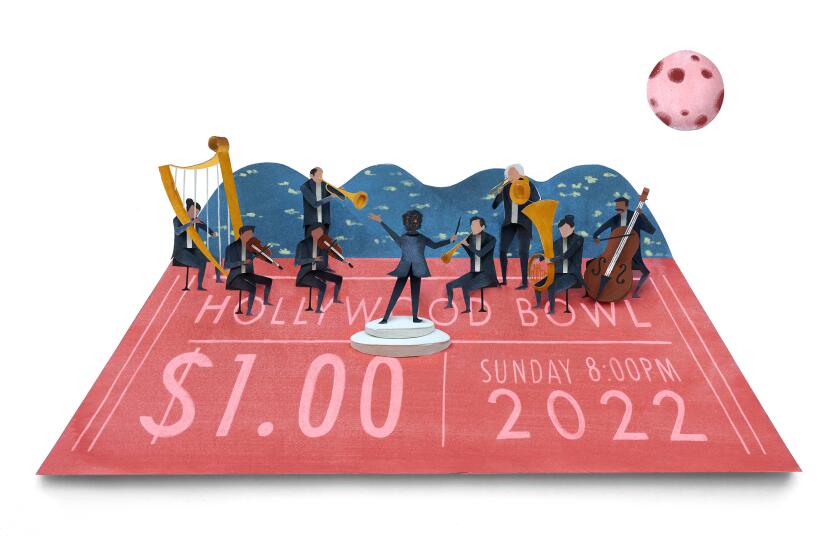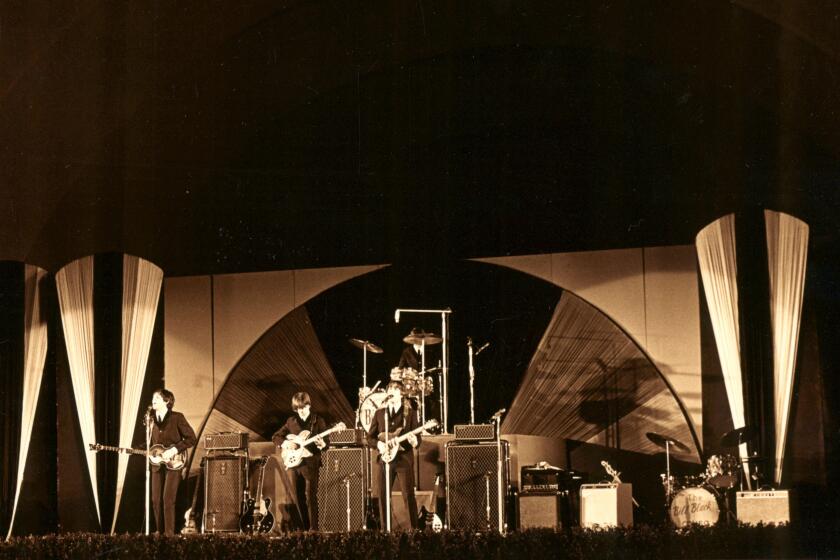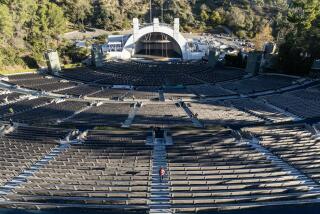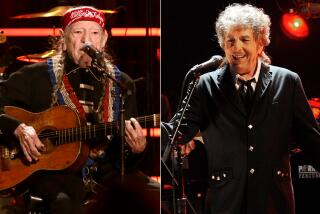8 ways the Hollywood Bowl is reviving historic stage moments for a modern audience
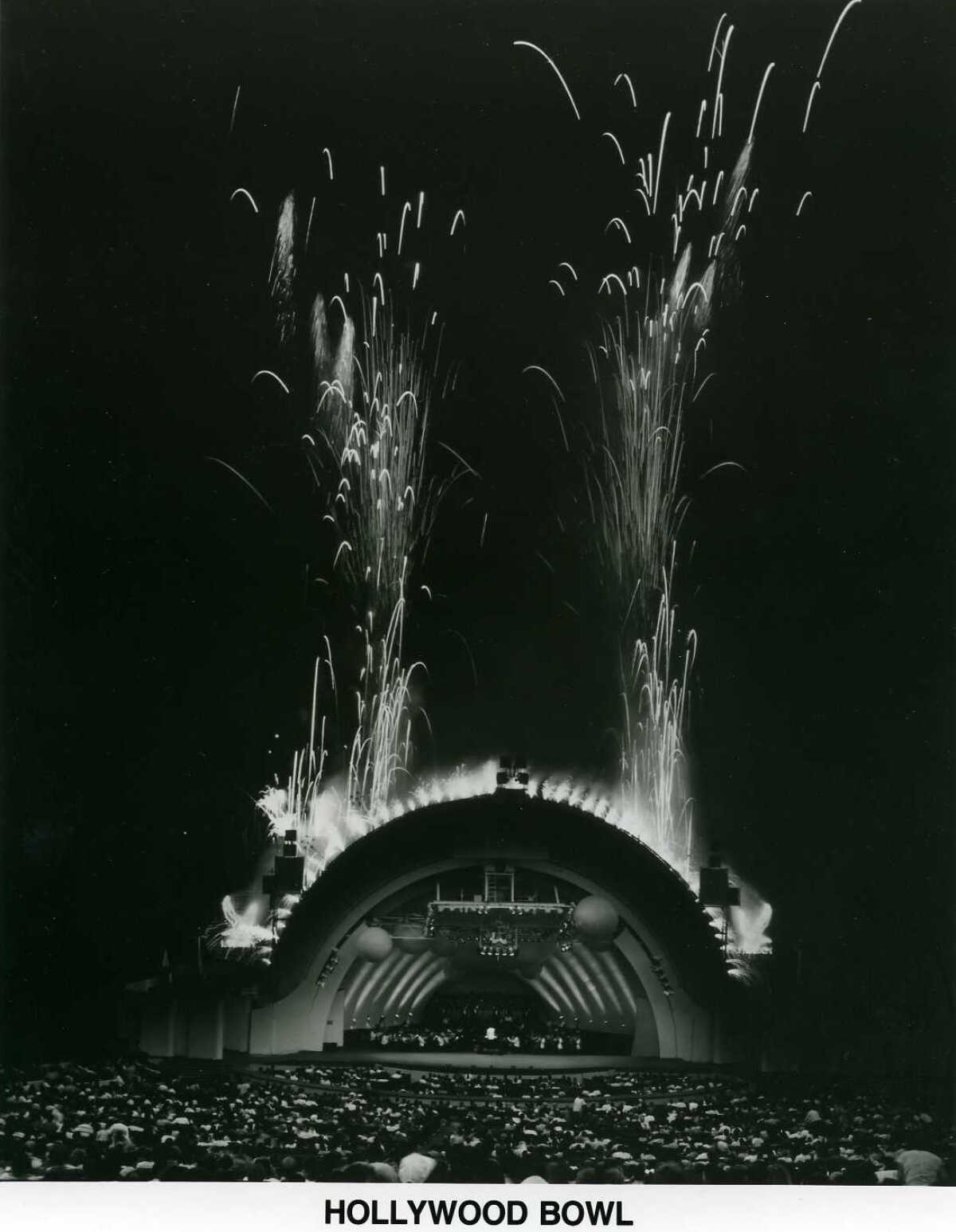
- Share via
The Hollywood Bowl is more than a venue: It’s a collection of stories.
The morning in 1921 when the Los Angeles Philharmonic played its first Easter sunrise service on a small wooden platform at the hillside site of the future hatch shell. The time in 1964 when the Beatles appeared before 18,700 histrionic fans in a show that sold out in less than four hours. The 1980 debut of Jazz at the Bowl, featuring Joe Williams, Dave Brubeck, George Shearing, B.B. King, Muddy Waters and Big Joe Turner.
There are countless more. A river of stories, and music, flowing over the last century toward this moment in time — the Bowl’s 100th anniversary season, set to kick off this summer. The amphitheater will celebrate by paying tribute to its most memorable stories through programming that reflects the legacy of performances past.
Here is a sampling of eight centenary offerings that mirror storied moments of Hollywood Bowl history:
Then: The first Symphonies Under the Stars concerts, 1922. Now: Ten evenings under the stars with Gustavo Dudamel and the Los Angeles Philharmonic (various dates):
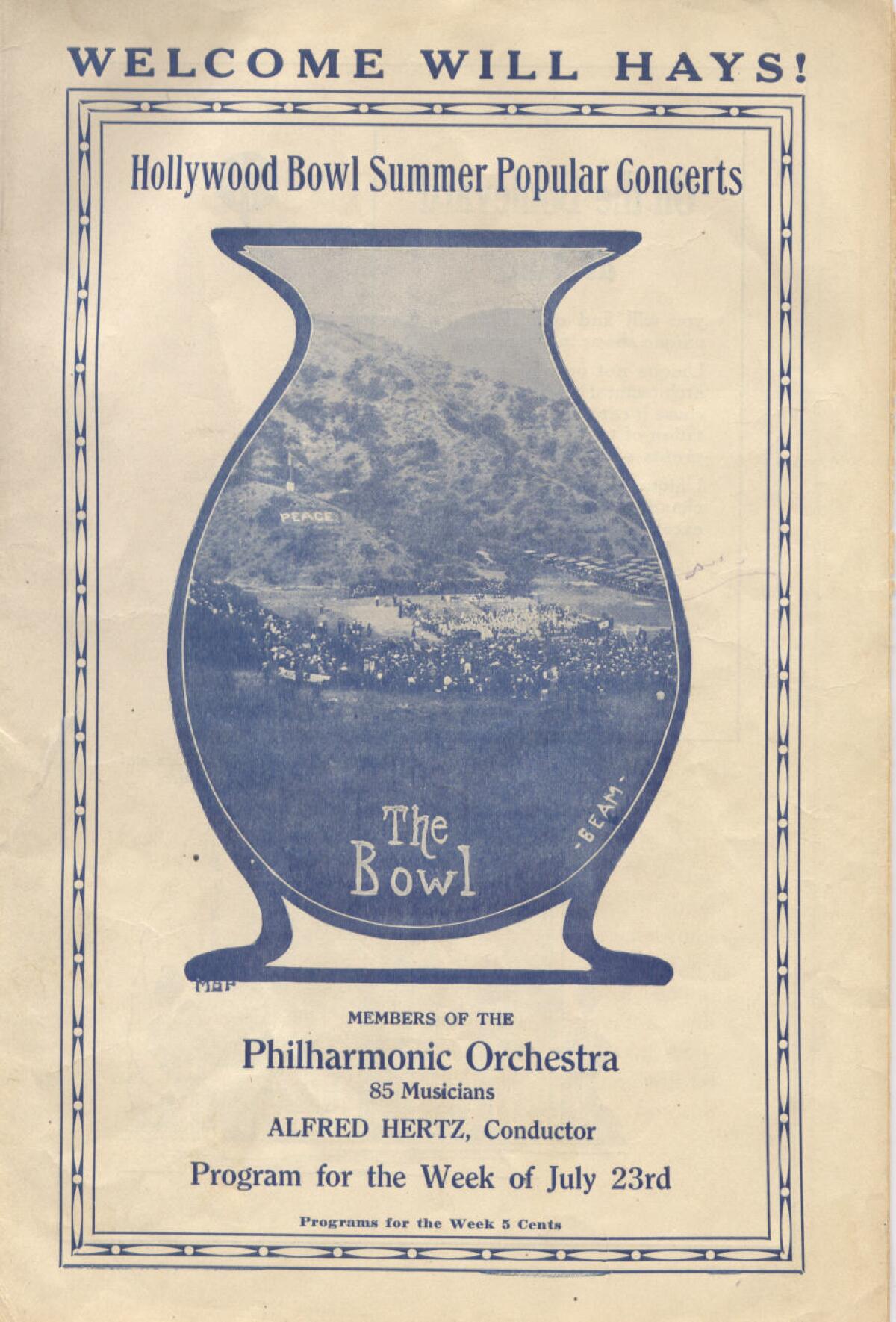
The love affair between the Hollywood Bowl and classical music dates back to 1922, when the Prussian-born conductor “Papa” Alfred Hertz programmed the first Symphonies Under the Stars. Julia Ward, director of humanities for the L.A. Phil and editor of the new book “Hollywood Bowl: The First 100 Years,” said Hertz was considered the father of the Bowl and created the template for the type of classical music that would be successful at the venue throughout the 20th and early 21st centuries, including Mozart and Tchaikovsky. It was no accident, Ward said, that the latter composer’s music ended up being used for the Bowl’s annual fireworks spectacular.
Dudamel’s appearances this summer during the evenings under the stars will further his streak of having the most Bowl appearances of any music director in the history of the L.A. Phil, said Chief Executive Chad Smith. The count before this summer’s festivities stands at 151 performances, excluding the performances recorded in a mostly empty Bowl during the pandemic.
Then: “Die Walkürie” staged with music by the L.A. Phil in 1938. Now: The Industry founder Yuval Sharon directs Act III of Richard Wagner’s “Die Walkürie” (July 17):
The Golden Age of Hollywood ushered in an era of spectacle not only in film but also onstage. The yearning to create a space capable of staging performances on a grand scale resulted in the Bowl’s founding, Ward said. In 1938, one of the Bowl’s most memorable shows was launched in the form of Richard Wagner’s opera “Die Walkürie.” It was directed by prominent Italian director Armando Agnini and featured performers dressed as Valkyries holding flames aloft and riding horses down the hill behind the hatch shell. The riders were spotlighted so they appeared to be galloping in the sky. “Die Walkürie,” Ward said, remains one of the most spectacular Bowl events of all time.
It may not be possible to top the 1938 performance, but if anybody can, it’s Yuval Sharon. The MacArthur fellow and founding artistic director of L.A.’s avant-garde opera company the Industry will stage his own interpretation of Act III of “Die Walkürie.” Sharon, Smith said, is keeping the details of his plans under wraps, but word is that liberal use of green screens will help to mirror the flash and spectacle of the original event.
“Yuval is one of the most tirelessly creative people in the world,” Smith said. “It will be an immersive experience, and it will be very, very special.”
Then: Decades of Bowl performances by the likes of Martha Graham Dance Company and Alvin Ailey American Dance Theater. Now: Paris Opera Ballet (July 20, 21):
“The history of dance, not just in Los Angeles, but I would say in the United States, was really impacted by what was happening at the Bowl in the 1920s and ’30s,” Ward said.
Lester Horton, who is credited with launching the modern dance movement in L.A., in 1937 choreographed Stravinsky’s “The Rite of Spring” at the Bowl. The event featured the rare sight of barefoot dancers moving in angular, irregular ways and marked the first time Stravinsky’s work had been choreographed by an American.
Works by pioneering choreographers Ruth St. Denis, Ted Shawn, Norma Gould, Adolph Bolm, and Agnes de Mille also were performed at the Bowl.
Dudamel recently took over as musical director of the Paris Opera and has invited the Paris Opera Ballet to make its Bowl debut this summer, accompanied by the L.A. Phil.
Then: In 1943 Frank Sinatra becomes the first pop singer to perform at the Bowl. Now: A tribute to Peggy Lee and Frank Sinatra featuring Billie Eilish and Debbie Harry (July 27):
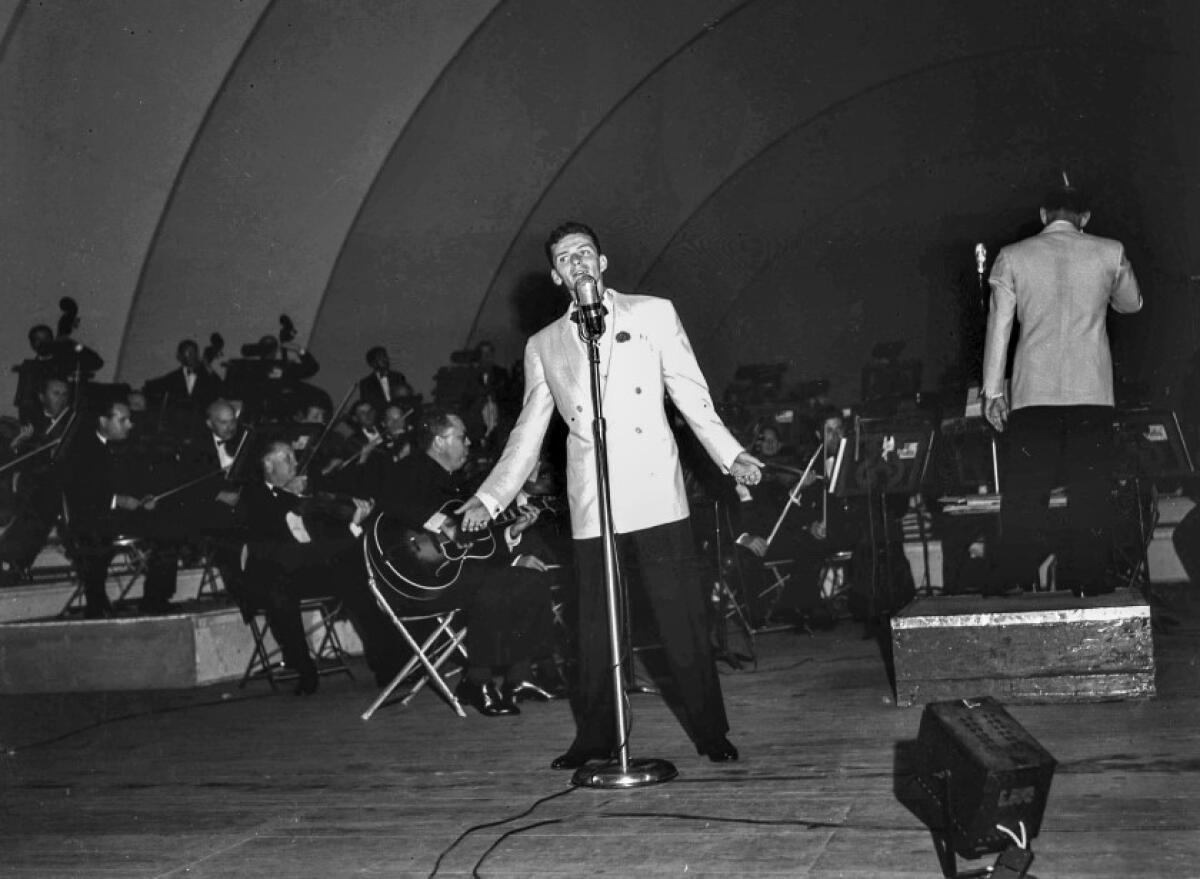
Crooner Frank Sinatra stirred a bit of controversy in 1943 when he became the first pop star to perform at the Hollywood Bowl, and also the first pop star to headline a full symphony orchestra concert at the venue, Ward said.
“That was groundbreaking at the time,” Ward said. “Just combining genres in that way. But he really set a model up for what a pop-and-orchestral collaboration would look like at the Bowl. And that, of course, has just continued.”
Peggy Lee made her own Bowl history when in 1954 she co-headlined the first live television broadcast from the venue.
Billie Eilish and Debbie Harry will star in this summer’s tribute to Sinatra and Lee.
Then: The Leonard Bernstein years, including his 1943 debut and his 1955 leading of the progressive Festival of the Americas. Now: “West Side Story” in concert, a tribute to the music of Leonard Bernstein, with Dudamel and the L.A. Phil (July 12 and 14):
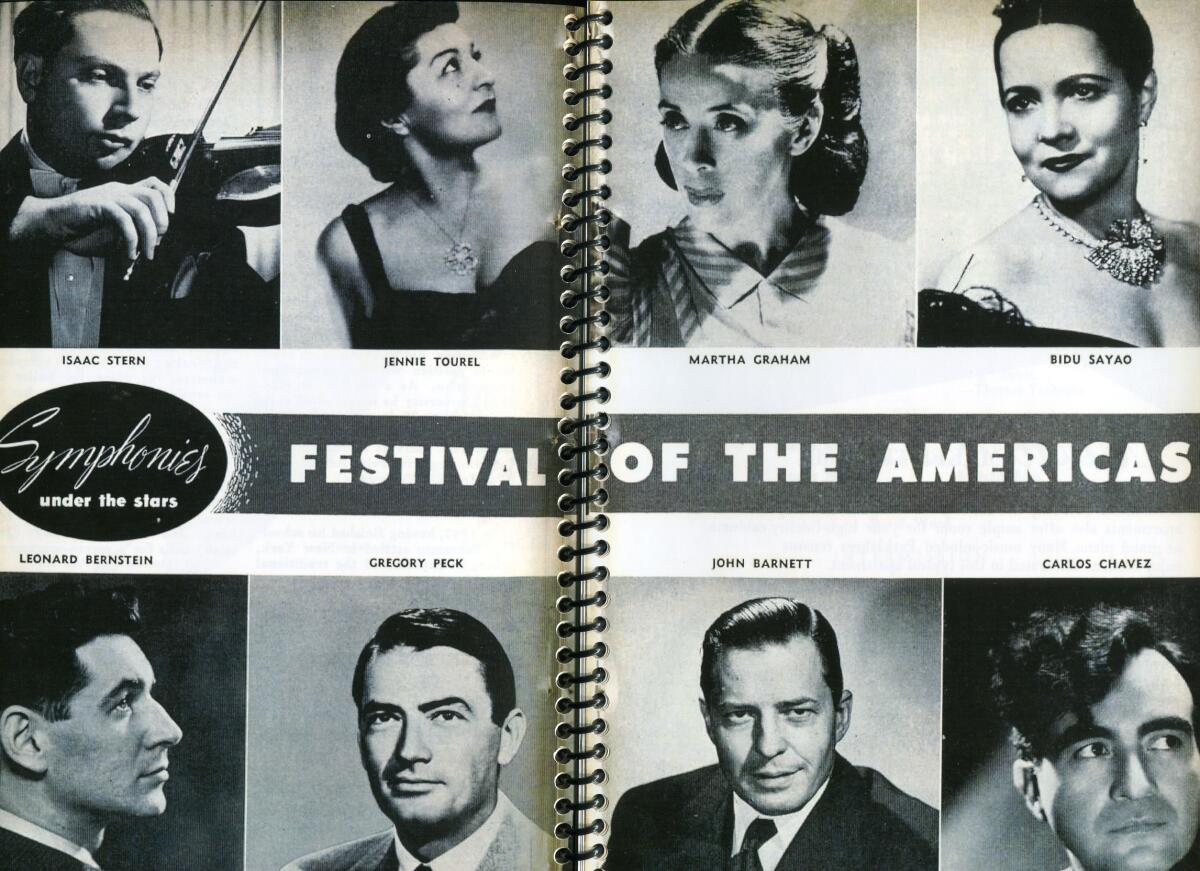
Bernstein’s relationship to the Hollywood Bowl is among the most storied of any conductor or composer in the venue’s history, Ward said. He made his first conducting appearance in 1943 in the West Coast premiere of his score to the ballet “Fancy Free.” He went on to produce the 1955 Festival of the Americas, a multiday celebration of Latin American music and repertoire.
Dudamel hails from Venezuela and created his own Pan-America Music Initiative, a five-year endeavor to spotlight the depth and breadth of classical music in Latin America. Dudamel and Bernstein share populist traits that endear them to their fans, so the former’s tribute to the latter should be particularly joyful to watch, Ward said.
Then: Herbie Hancock’s Bowl debut in the 1960s as part of the Miles Davis Quintet, followed by more than 30 additional appearances at the venue. Now: Herbie Hancock (Sept. 28):
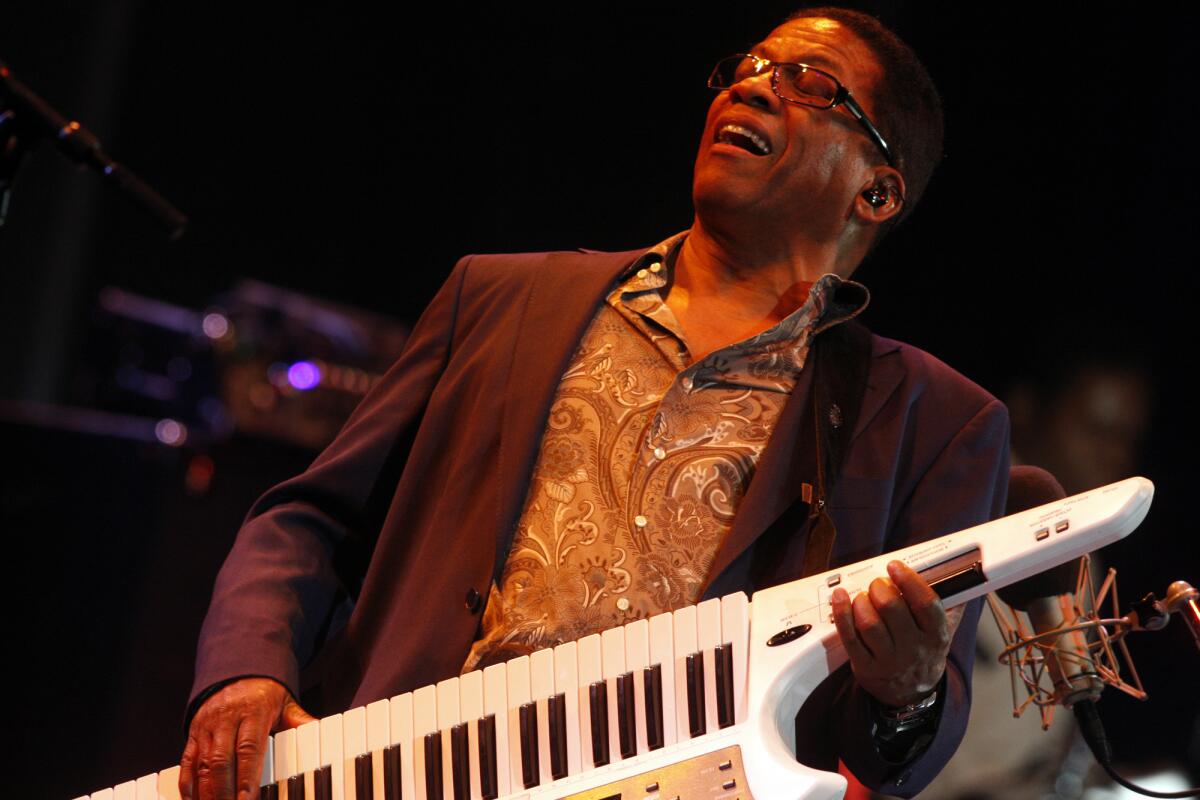
Hancock, 82, is the L.A. Phil’s creative chair for jazz and has performed every decade at the Bowl in his 60-year career, Smith said.
Added Ward: “You could do an oral history of the Bowl, just based on Herbie Hancock’s use of it.”
Then: John Williams first appears at the Bowl in 1978 and soon becomes a staple. Now: The Williams tribute concert “Maestro of the Movies” (Sept. 2, 3, 4):

One of the most famous film music nights occurred in 1977 when Zubin Mehta conducted the first “Star Wars” concert.
“And he did it with like a laser light show,” Smith said. “I mean, imagine the sensation.”
Williams himself made his Bowl debut the following year, conducting his own scores, and has been a prominent presence ever since — in many ways forming the lasting connective tissue between the Hollywood Bowl and Hollywood itself.
Williams will celebrate his 90th birthday during the Bowl’s centenary celebration.
Then: The first “Sound of Music” singalong in 2001, after which it became a Bowl tradition. Now: “The Sound of Music Sing-A-Long”: (Sept. 17):
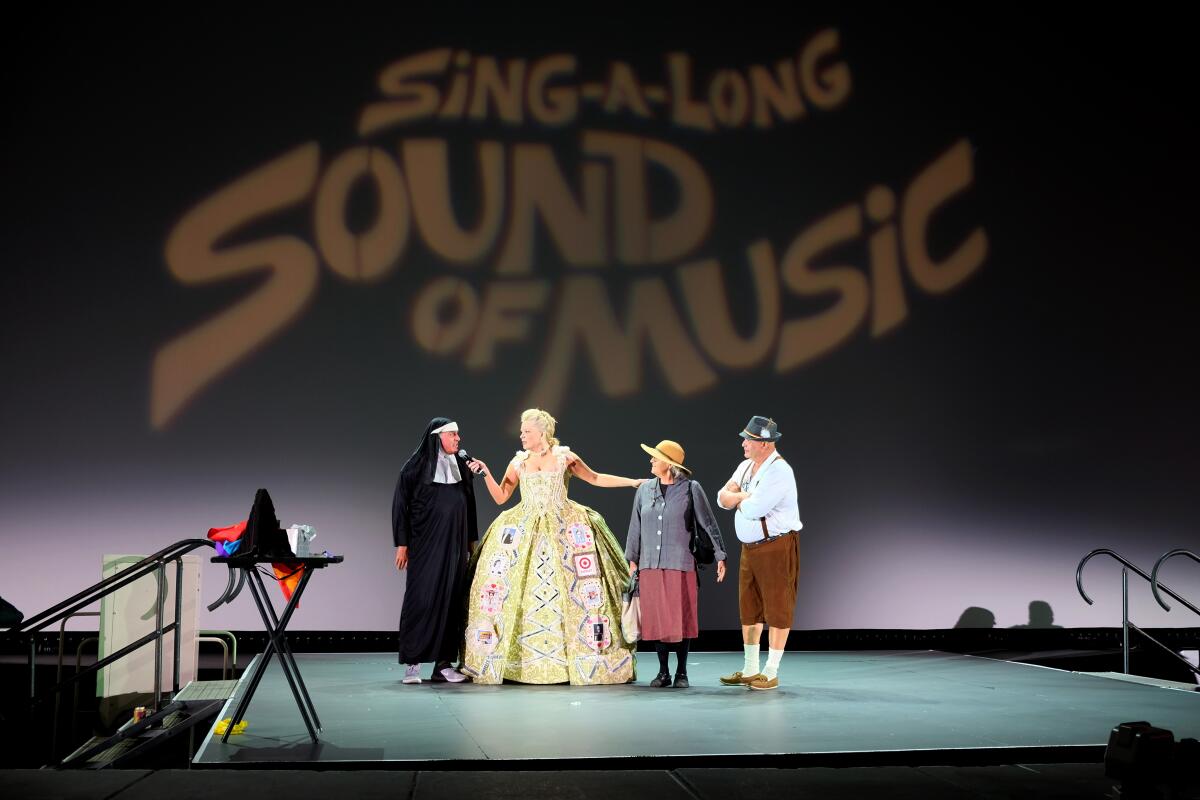
The journey to the stage for the “Sound of Music” singalong, a beloved Bowl tradition, can be traced to a nursing home in Inverness, Scotland, in the late ‘90s, Ward said.
“The nurses wanted to involve the residents in interactive group therapy, so they handed out the song sheets for ‘Seven Brides for Seven Brothers.’ And one of the grandchildren of the residents saw it and thought it would be an amazing live show, so he picked ‘Sound of Music,’ and presented it at a gay and lesbian film festival in London,” Ward said.
The show went to New York, and finally to the Hollywood Bowl, where it has received its biggest audience yet.
More Coverage: Hollywood Bowl
More to Read
The biggest entertainment stories
Get our big stories about Hollywood, film, television, music, arts, culture and more right in your inbox as soon as they publish.
You may occasionally receive promotional content from the Los Angeles Times.

